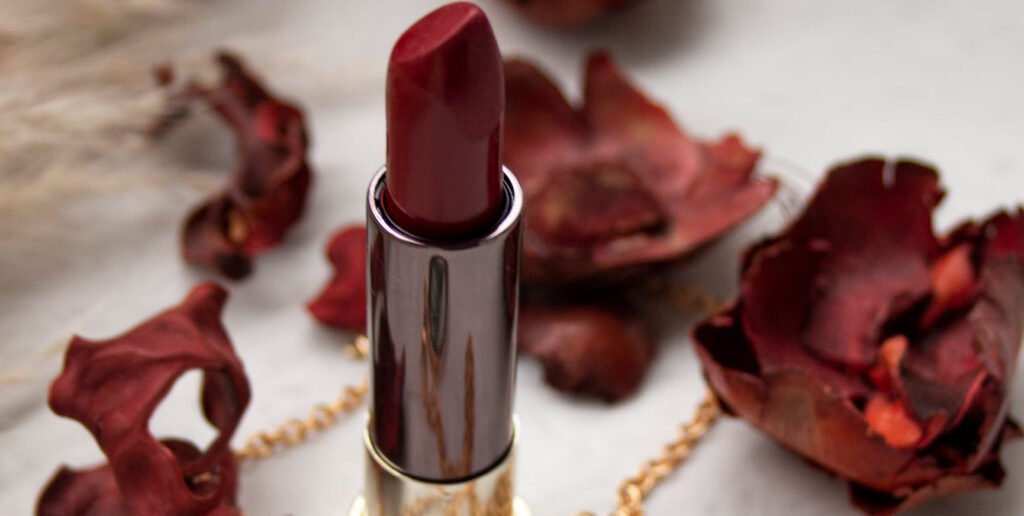The world of cosmetics is a realm where beauty meets science, and every product is a blend of creativity and precision. Lipsticks, those magical tubes of color and confidence, undergo a series of meticulous tests to ensure they meet the high standards expected by consumers.
These evaluation tests encompass a range of factors from physical properties to stability and performance, guaranteeing that the lipstick you glide on is not just a pigment, but a masterpiece of craftsmanship.
- Melting Point Determination Test
- Breaking Load Point Test
- Determination of Thixotropic Character
- Microbiological Tests
- Test for Rancidity
- Test for Application Force
- Storage Stability and Stability to Oxidation
- Determination of Surface Characteristics
- Determination of Color Dispersion
1. Melting Point Determination Test
A lipstick’s melting point is a crucial aspect that affects both its application and storage. The capillary tube method is commonly employed to assess this property.
A small amount of the lipstick is placed within a glass capillary tube, which is then subjected to cooling and heating cycles. The temperature at which the lipstick begins to melt and move within the tube is noted as its melting point. A higher melting point ensures a stable product that doesn’t become overly soft during usage or storage.
2. Breaking Load Point Test
Strength and durability are pivotal factors in the world of cosmetics. The breaking load point test evaluates a lipstick’s ability to withstand pressure. The lipstick is positioned horizontally, and weights are gradually added until the lipstick fractures. This test ensures that the product remains intact even under normal handling conditions.
3. Determination of Thixotropic Character
Thixotropy refers to a material’s ability to change viscosity under the influence of external forces like stirring or shaking. A penetrometer is used to measure the thixotropic character of a lipstick. This test helps assess the uniformity of viscosity, ensuring that the product remains consistent in texture and application.
4. Microbiological Tests
Maintaining hygiene and safety is paramount in cosmetic production. Microbiological tests detect the presence of contaminants or microorganisms that might compromise product quality or consumer health. Samples are plated on culture media, and the growth of colonies is monitored. The extent of contamination is gauged by colony count, ensuring the product’s integrity.
5. Test for Rancidity
Lipstick formulations often include oils that can undergo oxidation, leading to unpleasant odors, tastes, and changes in texture. A test for rancidity involves exposing the lipstick to hydrogen peroxide and measuring its peroxide number. This indicates the extent of oxidation, allowing manufacturers to prevent the development of undesirable characteristics.
6. Test for Application Force
The ease of application is a pivotal aspect of any lipstick. The application force test assesses the effort required to apply the product. By placing two lipstick surfaces together with a smooth paper in between and measuring the force needed to separate them, manufacturers ensure that the product glides onto the lips effortlessly.
7. Storage Stability and Stability to Oxidation
These tests evaluate a lipstick’s ability to withstand storage conditions and exposure to oxygen. By subjecting the product to controlled conditions and measuring changes in properties, manufacturers can predict the product’s stability over time and ensure it remains in optimal condition until its expiration date.
9. Determination of Surface Characteristics
Surface properties like the formation of crystals, microbial contamination, and wrinkles are scrutinized to ensure the product’s visual and tactile appeal. Any undesirable changes to the surface can affect user experience, so this test is crucial for maintaining product quality.
10. Determination of Color Dispersion
Color consistency is key in lipsticks. Microscopic studies are conducted to determine the size and dispersion of color particles. Ensuring that the particles are evenly distributed and within a specified size range guarantees a uniform and vibrant color application.
In conclusion, the journey of a lipstick from concept to the makeup bag is a meticulously orchestrated one. The series of evaluation tests described above are essential in ensuring that the product lives up to consumer expectations and maintains its quality over time. Each test plays a vital role in creating a lipstick that is not just a cosmetic, but an embodiment of artistry, science, and the pursuit of beauty.



